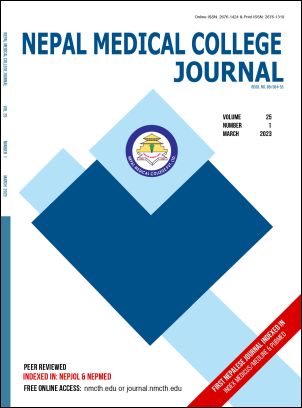Largest dengue outbreak (2022) in Nepal
DOI:
https://doi.org/10.3126/nmcj.v25i1.53383Keywords:
Dengue virus, emerging infection, largest outbreak 2022, NepalAbstract
Dengue virus infection, transmitted by Aedes aegypti (also by Ae. albopictus) mosquito, is an increasing health problem. The number of dengue cases has increased over eight-fold over the last two decades, from 505,430 cases in 2000, to over 2.4 milli on in 2010, and 5.2 million in 2019 with deaths accounting in thousands. Currently, 3.9 billion people in 129 countries mainly in Asian countries are at the risk of dengue infection. Most of the new cases are reported from Brazil, Vietnam, Indonesia, the Philippines, Sri Lanka and others. First case of dengue was reported from Nepal in 2004 and in 2006 a small outbreak was reported with 32 cases throughout the country. In Nepal, dengue epidemic occurred in 2010, 2013, 2016, 2017, and 2019; of them 2019 epidemic was largest one with reported 17,992 cases. This year (2022) largest outbreak occurred with a total of 54,784 cases recorded from all 77 districts in 7 provinces. Of the 7 provinces Bagmati Province was hardest hit (77.4%) followed by Lumbini Province (9.2%), Province 1 (4.2%), Gandaki Province (3.6%), Sudur Pashchim Province (2.5%), Madhesh Province (1.8%) and Karnali Province (1.2%). Most of the patients were aged 15-59 years and slightly more than half were males. Of the four serotypes existed in Nepal, DENV-1 DENV-2 and DENV-3 were common this year’s outbreak (DENV-1 was predominant: 57.1%). This demands a precise mapping of dengue through integrated disease surveillance and evaluation of the dynamics of population-level immunity on evidence-based policy-making in days to come.
Downloads
Downloads
Published
How to Cite
Issue
Section
License
Copyright (c) 2023 Nepal Medical College Journal

This work is licensed under a Creative Commons Attribution 4.0 International License.
This license enables reusers to distribute, remix, adapt, and build upon the material in any medium or format, so long as attribution is given to the creator. The license allows for commercial use.




